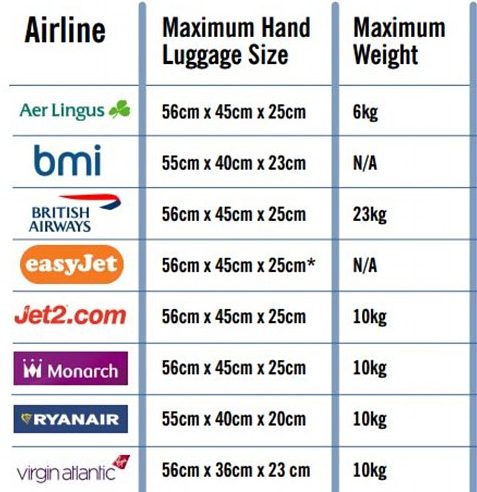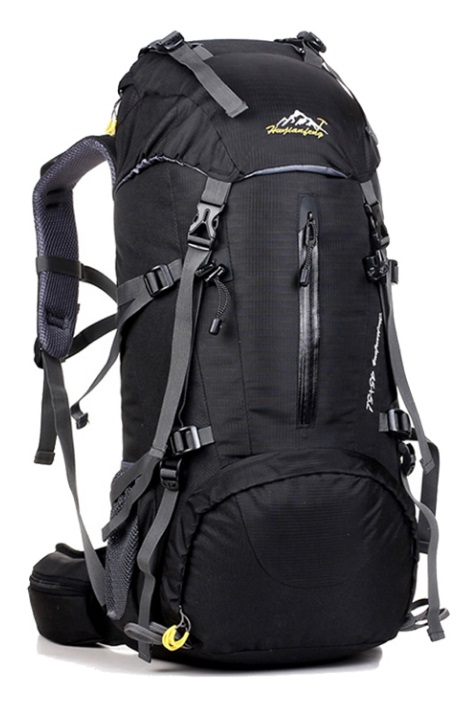 When I see first time travelers wrestling with an 80L backpack I can’t help but point and scorn – but if truth be told at their age I also thought the same. Fast forward to today and my benchmark is a 40L bag and 8 kg total weight.
When I see first time travelers wrestling with an 80L backpack I can’t help but point and scorn – but if truth be told at their age I also thought the same. Fast forward to today and my benchmark is a 40L bag and 8 kg total weight.
“Take half the stuff and twice the money”
The above quote holds very true – if you do find something desperately missing you can just purchase it along the way. Surprisingly I have seldom bought much more than a pair of sandals or a rain coat.
Why travel light
For starters, carrying stuff you won’t use or don’t need is burdensome. Having to carry heavy and bulky bags will tire you out and always having to find places to leave your stuff is annoying.
 Add to that, most people travel with budget airlines these days and checking-in luggage is expensive. Free carry-on luggage is usually restricted to a volume of 55 x 40 x 20 cm and a max weight of 10 kg.
Add to that, most people travel with budget airlines these days and checking-in luggage is expensive. Free carry-on luggage is usually restricted to a volume of 55 x 40 x 20 cm and a max weight of 10 kg.
Even if you get check-in bags for free, its still a hassle waiting around for luggage and their is always the chance your bags will get delayed or lost along the way.
Sometimes travelling light is also a necessity. We traveled as a family of four around Eastern Europe for two weeks in our Smart For Four. With that car it’s either boot space or leg room and we wanted leg room.
What I usually take
As a rule of thumb I pack a shirt and underpants for each day I travel, up to 5 days. You can usually find somewhere to wash clothes if travelling for longer than that. Shorts and pants you can wear multiple days without washing.
I usually take dark clothes as they do not show up stains as easily. In the winter I take lighter pants and put thermal underwear under them as then you have more options to take them off if it gets too hot. To conserve space I roll all the items rather than fold them. I wear my first sets of clothing on the first day I travel.
- Shirts x 5
- Underpants x 5
- Socks x 3 (take more and leave sandals at home in winter)
- Shorts x 2
- Pants x 1 (take one more pair in winter and leave shorts at home)
- Windproof jacket x 1
- Sandals
- Sneakers
- Thermals (winter only)
- Hat
- Toothbrush, toothpaste, razor & soap.
- Small amount of washing detergent (to hand wash clothes in a sink if needed)
Electronics
- Phone and charger
- iPad and charger
- Car charger
- Battery pack (if not having frequent access to electricity)
- Headset (long haul flights only)
My wife and kids pack even less than me. Their bags usually weigh in at 5-6 kg. The kids are allowed to take 3 small toys to play with and their phones.
What not to pack
 Unless specifically trekking, camping gear is a waste of time. If you must, a small 500 gram sleeping bag is okay.
Unless specifically trekking, camping gear is a waste of time. If you must, a small 500 gram sleeping bag is okay.
More than one pair of shoes and a pair of sandals is just dead weight. If I have to be somewhere where I need dressy shoes then I will make a choice between taking either sandals or sneakers.
I generally don’t take Jeans as they are not that great for walking in, dry slowly and are heavy.
There is seldom need to take a Laptop unless there is a need to work while away. The iPad is a good back up device and great to palm off to the kids to keep them quiet.

Best Bags for the job
When your target gross weight is under 10 kg, the bag you choose should be light. A well made bag with strong zippers and convenient pockets is the best.
I prefer small 40-50L rucksacks with hoods on top as they usually have a pocket to hide away passports and cash which requires opening the bag to access. The hood can also be pulled down to compress the contents of the bag.
The bag pictured here I purchase from China for under €30. The quality is good. My only complaint is the steel frame which adds a little too much weight.
I usually pack them 3/4 full so there is room to carry home any souvenirs I collect along the way.